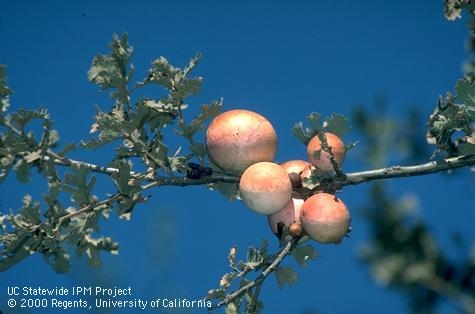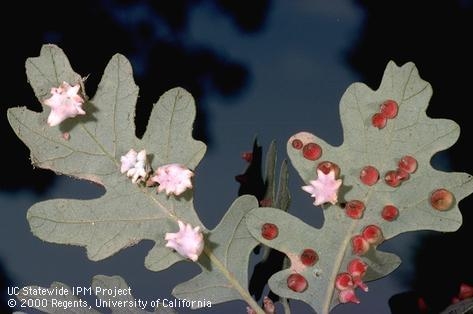You might be surprised to know these growths on oaks are galls caused by different species of gall wasps. Gall wasps are insects which are quite small, and unlike the larger wasp species you may be familiar with, they do not sting people. There are numerous species of cynipid wasps, and they make different shapes and sizes of galls.

Galls are created when a female wasp lays her eggs in branches, flowers, leaves, or twigs, which causes the plant to form a gall. Common galls include apple, spined turban, cone, woolly leaf, and jumping. In summer, hundreds of jumping oak galls drop off trees and can be seen hopping an inch or more off the ground! This is due to the movement of the tiny wasp larva inside each gall.
It's not necessary to manage gall wasps; they are naturally killed by a complex of fungi, parasites, predators, and competing insects (primarily moth larvae and other wasps) that live within galls. They usually do not seriously harm oak trees. You can learn more about the various gall making organisms by visiting Oak Gall Wasps and Other Cynipids on the UC IPM website. You can also read about them in the third edition of Pests of Landscape Trees and Shrubs.
